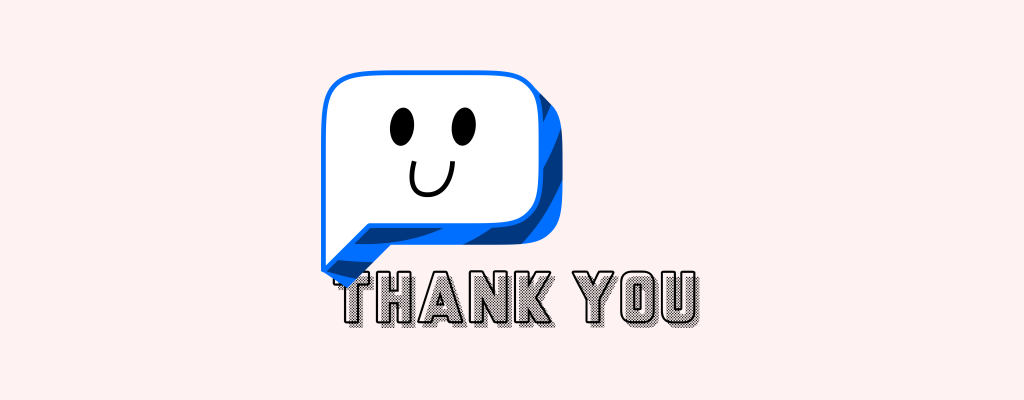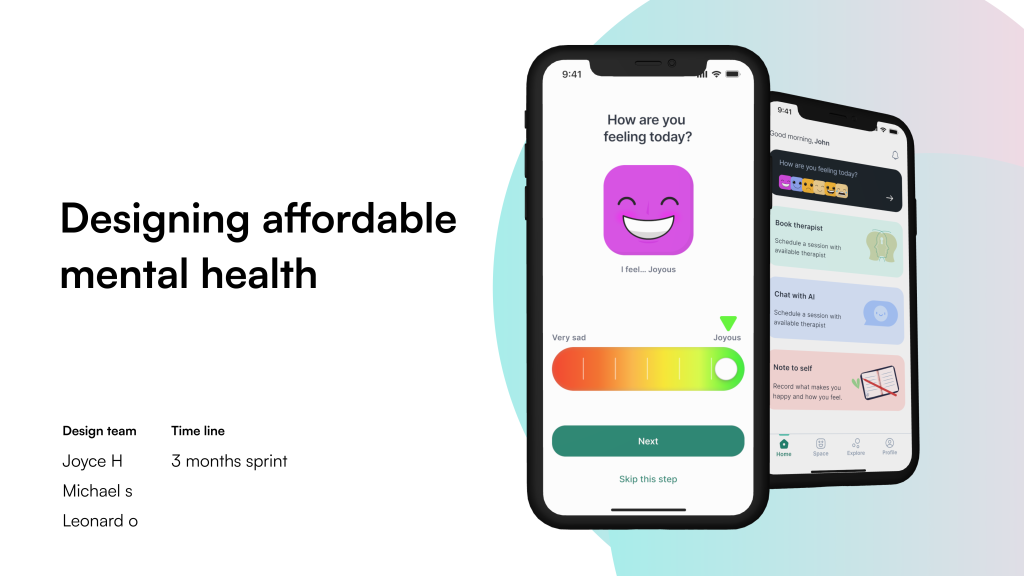
About Insync
Insync is a health-tech platform that provides optimum mental health care to people through the use of artificial intelligence and the power of people (therapy and anonymous support groups). The goal is to make access to mental health care accessible and affordable for everyone.
This case study highlights sessions and designs that I participated in
Problem statement
Mental healthcare is still expensive, inaccessible, and stigmatised and currently, there are limited professionals to tackle the problem in developing countries

User personas
Through collaborative user persona development with clients and the project manager, we identified our target user’s needs and mental models. This guided my UI design process, ensuring screens align with users’ existing expectations for intuitive interaction.

App requirements
- Allows users to schedule and select therapists of their choice based on self-assessment and preference questions they’re asked. Users pay for this service.
- Allow users to join needs-specific support groups (what we will call safe space). This feature is based on a subscription freemium model.
- Has a feature that allows users to access knowledge-based content regarding mental health
- Provides an AI-enabled mental health chatbot for self-help.
- Enable medical mental health care practitioners provide thier services and earn extra money
The app was designed for two sets of users
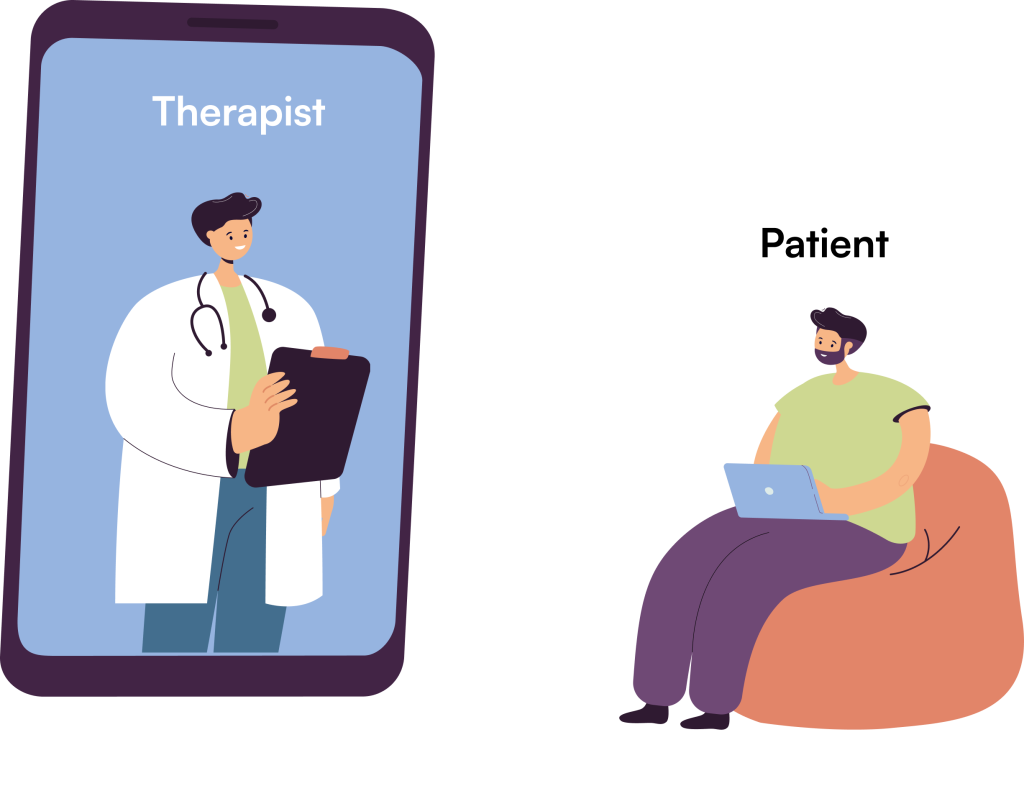
Tracking emotional feedback
Initially, the frequency of collecting emotional feedback wasn’t defined, hindering the ability to track users’ emotional state over time. This data is crucial for both users and therapists. In response to user feedback, I implemented daily emotional check-ins.
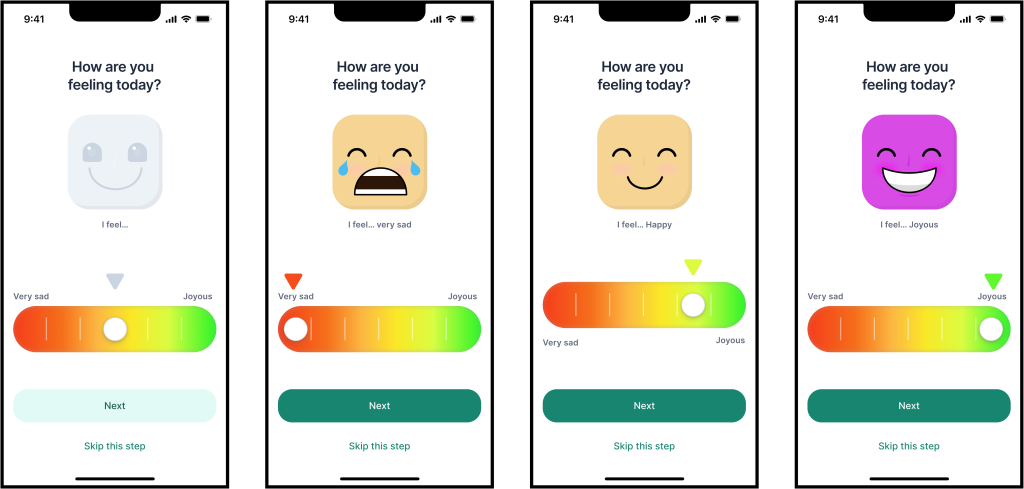
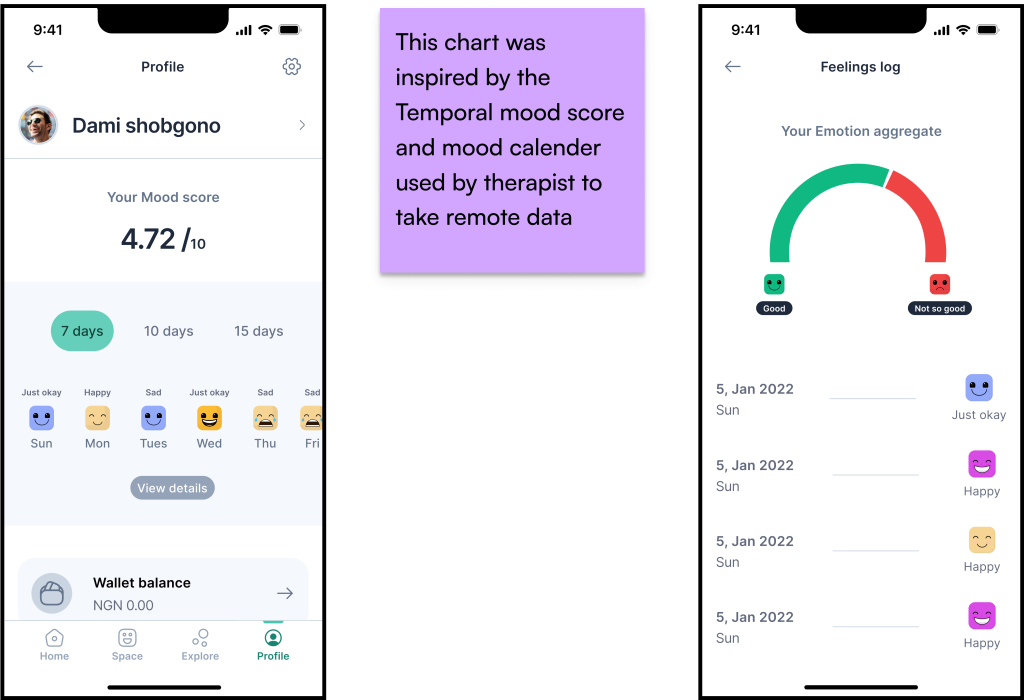
Prioritising emotional feedback and schedules
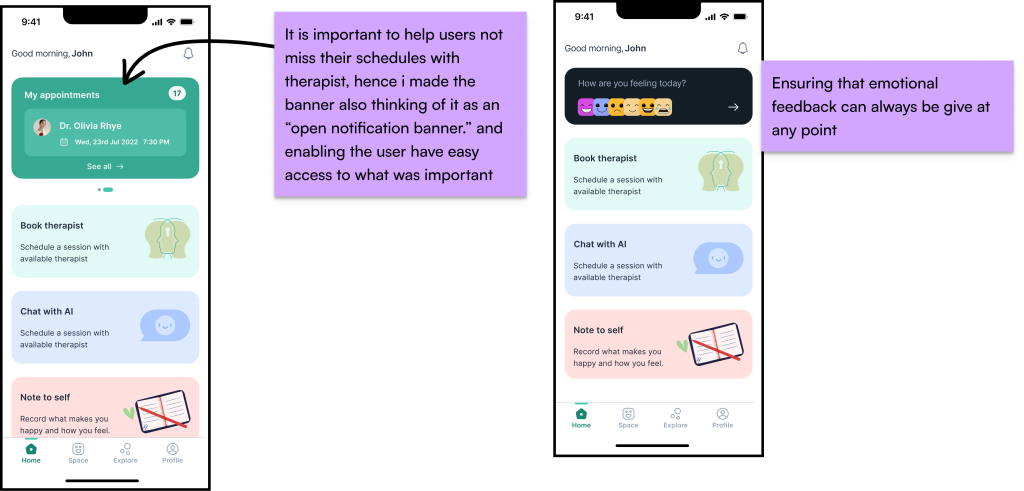
Booking a therapist
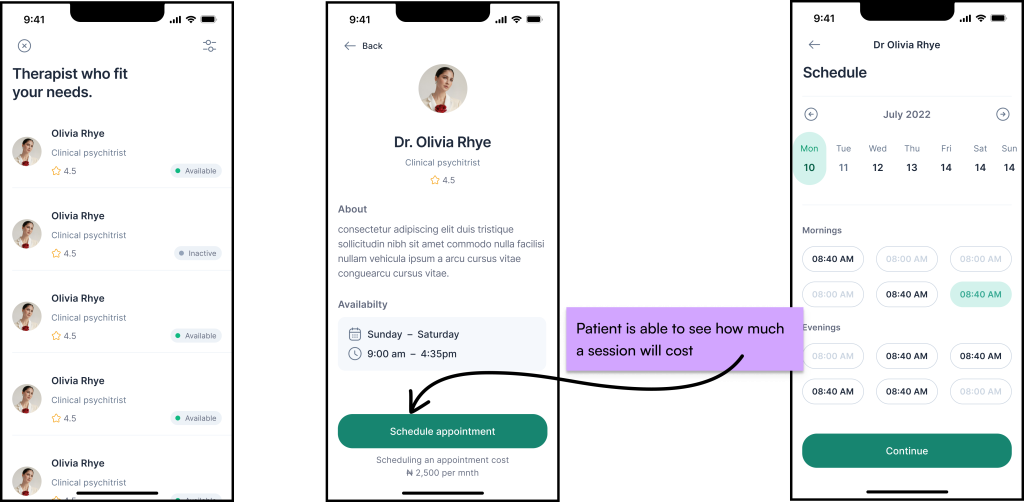
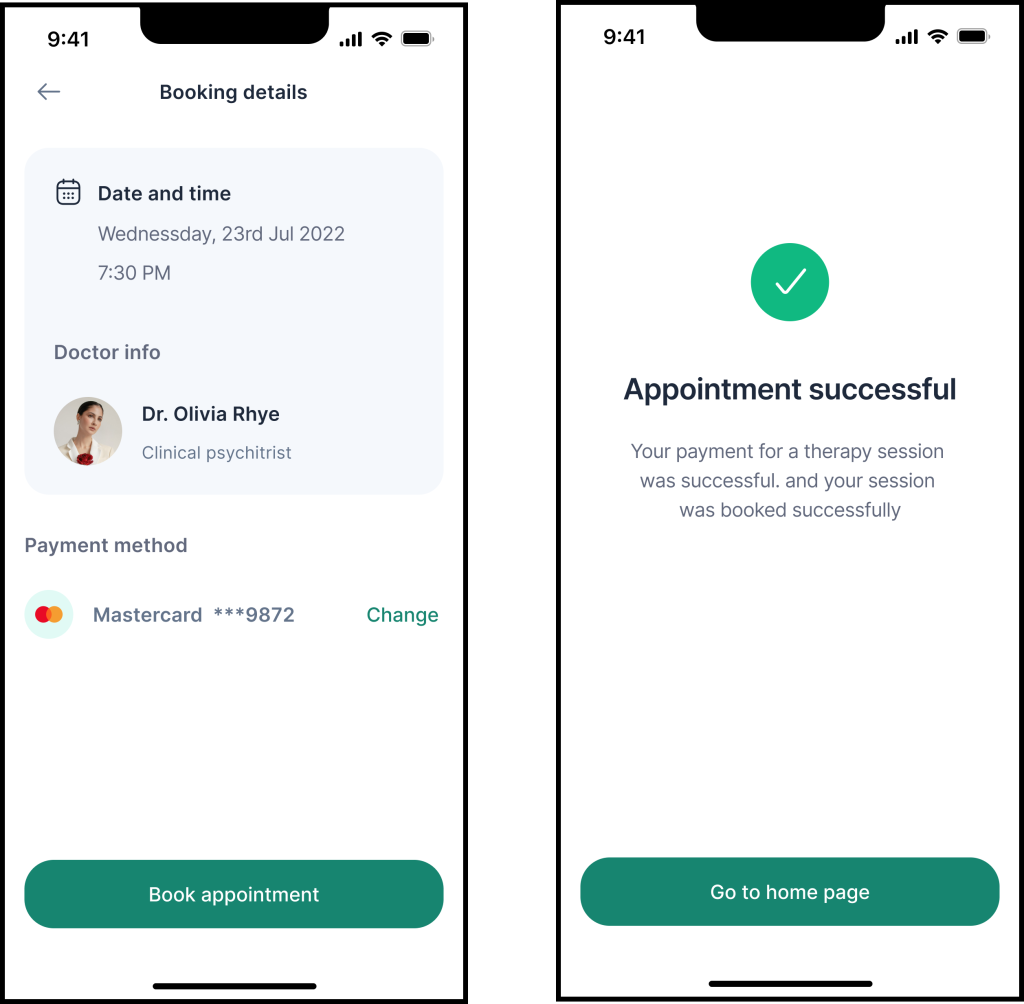

Safe Space to Share: Support Groups Made Anonymous
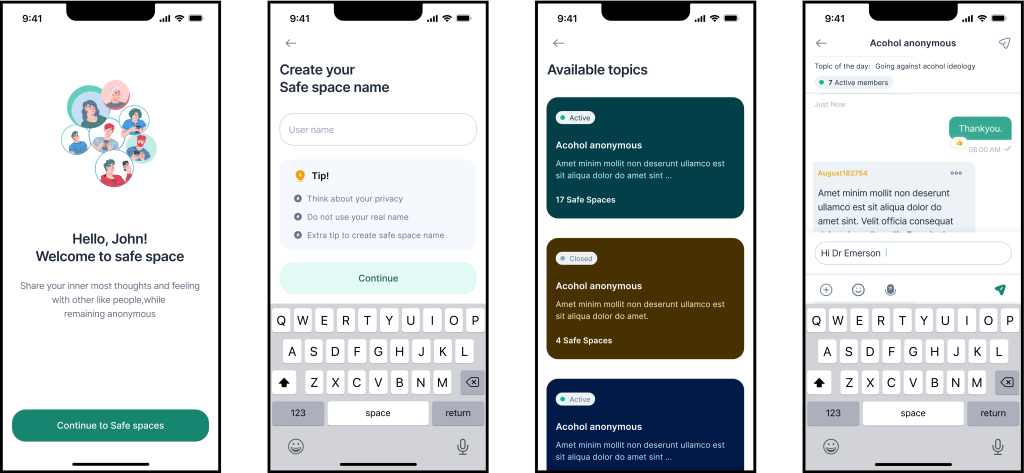
Therapist dashboard
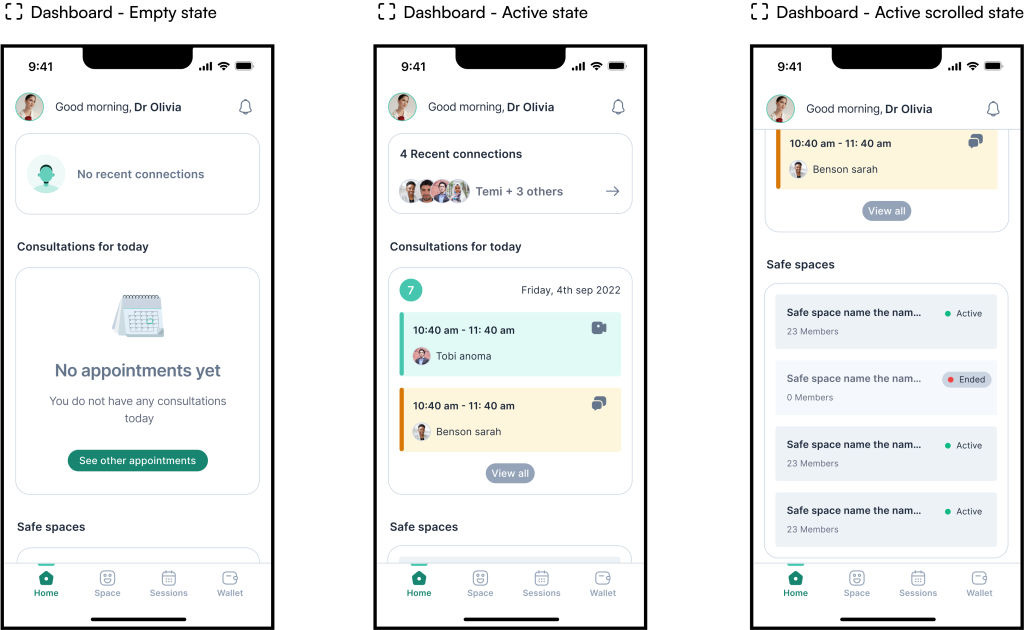
Therapist Calender

